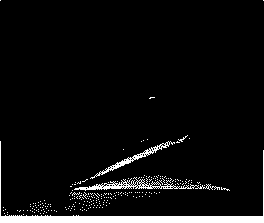Photosensitive hydrogel containing cyclodextrin and azobenzene and preparation method of photosensitive hydrogel
A cyclodextrin and hydrogel technology, applied in the field of new materials, can solve the problems of insufficient biocompatibility and insufficient performance of mutual conversion effect, and achieve low biotoxicity, easy control and good biocompatibility. Effect
- Summary
- Abstract
- Description
- Claims
- Application Information
AI Technical Summary
Problems solved by technology
Method used
Image
Examples
preparation example Construction
[0033] The invention provides a method for preparing a photosensitive hydrogel containing cyclodextrin and azobenzene, comprising the following steps:
[0034] (1) Preparation of azobenzene-modified second-generation dendrimers with methyl groups at the end
[0035] Using triethylene glycol monomethyl ether as a starting material to prepare a first-generation dendritic molecule with a methyl end group; then using triethylene glycol as a raw material, adding pyridine p-toluenesulfonate after reacting with p-toluenesulfonyl chloride Acid acid makes one end capped and the other end activated. The reaction product of the two is modified and reacted with methyl gallate to prepare an ester-modified second-generation dendritic molecule (Me-G2-COOMe) with a methyl-terminated end, and the product is reduced to obtain a hydroxyl-modified second-generation dendritic molecule Then react with tetrabromine to obtain bromine-modified dendritic molecule (Me-G2-Br) at the end of the methyl gr...
Embodiment 1
[0043] Example 1 Preparation of azobenzene-modified end-methyl second-generation dendrimer Me-G 2 -Azo
[0044] The preparation process of this embodiment is as shown in the following formula (2):
[0045]
[0046] The first-generation dendrimers (Me-G 1 -OH), the yield was 92%. Then, according to the molar ratio of triethylene glycol and p-toluenesulfonyl chloride as 8:1, react in tetrahydrofuran solution at 0° C. for 2 hours, and react to obtain a triethylene glycol compound activated at one end with a yield of 63%. . Afterwards, pyridine p-toluenesulfonate was added to cap one end and protect the other end for activation. The reaction products of the two (first-generation dendrimers and triethylene glycol compounds) were modified and then reacted with methyl gallate to prepare ester-modified second-generation dendrimers (Me-G 2 -COOMe), the product undergoes a reduction reaction to obtain a hydroxyl-modified second-generation dendritic molecule (Me-G 2 -OH) reacts ...
Embodiment 2
[0048] Example 2 Preparation of photosensitive hydrogel containing cyclodextrin and azobenzene
[0049] Mix polyethylene glycol (PEG10K) and α-cyclodextrin to prepare polyrotaxane hydrogel, and ensure that the concentration of polyethylene glycol (PEG10K) and α-cyclodextrin is at least 0.1 mg / ml during the process; About 5 hours to form a polyrotaxane hydrogel, as figure 2 shown. Add water-soluble dendrimers (Me-G 2 -Azo) (i.e. the molar ratio of cyclodextrin groups to azophenyl groups is 1:1), the hydrogel is transformed into a sol, such as image 3 shown.
[0050] After irradiating it with ultraviolet light with a wavelength of 365nm for 30 minutes, and placing it in the dark for 10 hours, the sol-gel conversion will return to the gel state, such as Figure 4 shown. Then adopt visible light with a wavelength of 450nm to irradiate the formed hydrogel for 40min, and after standing for 8 hours, the sol appears again, as Figure 5 As shown, the photosensitive hydrogel con...
PUM
 Login to View More
Login to View More Abstract
Description
Claims
Application Information
 Login to View More
Login to View More - R&D
- Intellectual Property
- Life Sciences
- Materials
- Tech Scout
- Unparalleled Data Quality
- Higher Quality Content
- 60% Fewer Hallucinations
Browse by: Latest US Patents, China's latest patents, Technical Efficacy Thesaurus, Application Domain, Technology Topic, Popular Technical Reports.
© 2025 PatSnap. All rights reserved.Legal|Privacy policy|Modern Slavery Act Transparency Statement|Sitemap|About US| Contact US: help@patsnap.com



